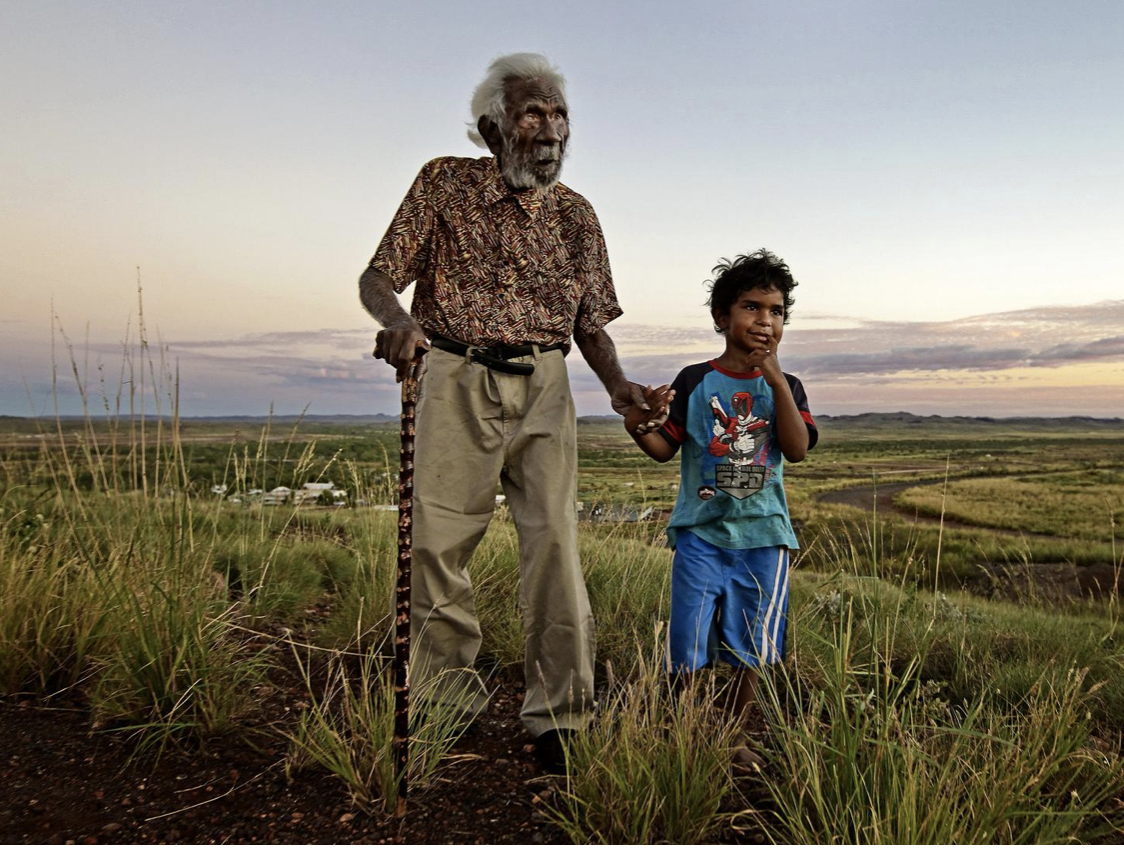A DAVID AND GOLIATH STRUGGLE IN THE PILBARA: TWIGGY VRS YINDJIBARNDI
Fortescue Metals Group has revealed a record profit of $10.3 billion U.S dollars, giving Andrew “Twiggy” Forrest a $2.3 billion dollar dividend.
The record profits come thanks to the recent surge in the prince of Iron Ore, but FMG is actually worth $6 billion less since last month after the Iron Ore price dropped from record highs.
Meanwhile a new book released by writer Paul Cleary and the ongoing dispute between Mr Forrest and the Yindjibarndi people over mining on their lands has been released to the public.
Speaking on Ngaarda Breakfast, Mr Cleary says he was amazed at resilience of Yindjibarndi CEO, Michael Woodley who spearheaded the legal action against FMG.
“I don't know how people like Michael Woodley have sort of managed to remain sane during this whole period because the level of, legal proceedings and the amount of the volume of material, I
work out this 670,000 words of court and tribunal judgments that have been generated by this dispute…”
Mr Cleary wrote this article for the Australian last week.
Manyarnbangu Ned Cheedy, 105, and his great grandson Will Woodley look out over the land from Mt. Welcome in Roebourne, WA. Picture: Lee Griffith
Soul of the land didn’t live to see mining giant’s destructive nature
Roebourne, Western Australia, March 11, 2012.
The old man’s life spans more than a century, but it could be said that this extraordinary human being is the custodian of knowledge that goes back into deep time, tens of thousands of years perhaps. His name is Ned Cheedy in English, and Manyarnbangu in Yindjibarndi, and he is 106 years old – sadly, more than double the life expectancy of many Aboriginal men in Australia today. Cheedy is the Yindjibarndi’s oldest and most respected lawman, who has worked as a stockman, a windmill man and a lay preacher, as well as being a parent and foster parent to many children. He was born and raised on Hooley Station in the heart of the Yindjibarndi nation, where he lived with grandparents who presided over their vast expanse of country before white colonisation. Cheedy remembers Gurgagawarn and Yikarrbangu on his mother’s side, and Jinaguduthu and Wiralbangu on his father’s side.
He lies in a single bed wearing a pair of cream pyjamas in the neat and tidy home of his daughter Rose. Cheedy’s breathing is laboured, but when we get talking he is lucid, articulate and forthright.
He expresses great sadness about the impact of iron ore mining on the traditional lands of the Pilbara, and finds it hard to comprehend how large tracts of Aboriginal land are being dug up and shipped to the other side of the world. He shakes his head, says this is wrong. He speaks of how Aboriginal communities should carefully manage the money they receive from mining.
READ MORE:Balancing act in the Pilbara|Fortescue up for ‘huge’ sum|Fortescue loses native title High Court appeal|A matter of trust
The question I want to ask most of all is about the role of Michael Woodley, then a 39-year-old chief executive of the Yindjibarndi Aboriginal Corporation, in the bitter dispute with Fortescue Metals Group and a breakaway group in the community. Cheedy has signed affidavits attesting to Woodley’s incredible knowledge of Yindjibarndi culture, law and religion, declaring that “he is the man with all the knowledge”. I want to know if he stands by these affidavits and if Woodley really is the man he says he is. The simple question of “What do you think of Michael Woodley’s leadership in the dispute with FMG?” produces an electrifying response.
Cheedy lifts his torso off the bed and leans on one elbow, gesticulating as he answers. “He’s going the right way,” he says emphatically. “He’s doing the right thing. Michael Woodley, he’s been with the old people, making sure our culture does not die. Maybe he’s the right person to talk about what is important.”
I didn’t know it at the time. Cheedy was just three weeks away from drawing his final breath, and these were his last words to an outsider about the actions of a mining company that had torn apart his community.
Ned Cheedy’s sadness about the impact of mining on the Pilbara would have been magnified many times over had he been alive one year later. In May 2013, FMG did something so brazen that few businesses in this country would ever consider it, let alone a major corporation listed on the ASX. FMG officially began mining Ned Cheedy’s country, even though it had no agreement in place with the Yindjibarndi people to do so.
Cheedy was a member of YAC, which had been appointed by the Federal Court to represent the Yindjibarndi’s native title interests, and YAC had refused to accept FMG’s settlement offer because it was far inferior to the industry standard. FMG decided that, after obtaining state and federal government approvals, it would go ahead and mine Yindjibarndi country despite YAC’s opposition. On May 6, 2013, FMG opened a mine it called Firetail to produce high-grade, low-cost iron ore. Firetail is wholly within YAC’s native title claim but it is part of a much bigger network of mines called the Solomon Hub, which has produced around 70 million tonnes of iron ore a year since 2013, and averaged around $US5bn in revenue (about $7.5bn in 2020-21). About half of the entire Solomon complex is within Yindjibarndi country. Solomon produces around 40 per cent of FMG’s total production, which means one-fifth of the value of FMG, and the wealth of Andrew Forrest, has been generated by mining Yindjibarndi land without proper Aboriginal consent.
Prime Minister Scott Morrison visits Fortescue Metals Group's Christmas Creek mine with CEO Andrew Forrest. Picture: Adam Taylor / PMO
FMG’s headlong rush to develop was aimed at meeting the demand that has been soaring ever since it first began shipping iron ore from its Pilbara mines in May 2008. It has to be said that the business strategy of FMG has been exceptional. Not only did the company founder, Forrest, predict a once-in-a-century boom in demand for iron ore, but he was able to quickly create a business from scratch to meet this demand. That business is now worth $70bn, making Forrest Australia’s richest man (and second-richest person after Gina Rinehart).
In the space of 15 years, FMG has turned iron ore into gold as it generates a profit margin of more than 70 per cent, better than tech giants like Amazon and Netflix. And this “Fortescue flywheel” of wealth generation is now the driving force behind a bold plan to take FMG beyond digging up dirt and into 21st-century businesses like hydrogen and renewable energy.
But one nagging flaw in this business model is FMG’s dealings with the traditional owners of the land from which all its wealth has been extracted – and will continue to be extracted for many decades to come. Underpinning FMG’s business success are “unconscionable” or manifestly unfair agreements that give the company unfettered access to Aboriginal land for undefined projects, for indefinite periods and at minimal cost. In the rush to develop, FMG has been associated with some unsavoury practices, such as splitting communities, negotiating a royalty of just 2.5c per tonne. When FMG has met stiff resistance from native title groups, the company has employed what its own executives describe as “tough and savage” litigation at a “gruelling pace” to overcome opposition.
The company’s impact on Aboriginal sacred sites has also been evident. When expert consultants have identified “rare finds” of ancient Aboriginal heritage, FMG has often terminated their services and found ways to massively underreport the extent and significance of the finds. Ancient rock shelters and likely burial grounds that attest to Aboriginal occupation of around 50,000 years have been destroyed forever by FMG’s relentless rush to expand. These tactics undermine FMG’s enviable record, including its claims about employment of Aboriginal people and contracts with Indigenous businesses.
When it came to mining Yindjibarndi country without consent, FMG has employed tactics so extreme and so fanciful that they have resembled the stuff of a Hollywood movie, or indeed the clandestine work of secret service agencies. But FMG met its match in the formidable Michael Woodley, who became CEO of YAC at the age of 34.
The contest has become perhaps the biggest and most prolonged native title fight since the 1992 Mabo High Court casePIC: Adam Taylor / PMO
Despite FMG’s relentless efforts to divide the Yindjibarndi community and destroy YAC through legal action, Woodley and his core group of supporters remained resolute as they waged a 13-year legal battle on a shoestring budget. Since 2009, legal wrangling between FMG and YAC, most of it initiated by FMG, has generated more than 670,000 words of legal judgments spread across 1550 pages published by the Federal Court of Australia, the Supreme Court of Western Australia and the National Native Title Tribunal.
The contest between the two has become perhaps the biggest and most prolonged native title fight since the 1992 Mabo High Court case, which brought recognition of native title in Australia for the very first time.
In this Wild West of iron ore mining, the powerful usually prevail. But the Yindjibarndi have run the native title contest of the century and have now put this law into uncharted territory as FMG faces a significant compensation bill or an out-of-court settlement. The cost of reconciling FMG’s transgression would be linked to the social, cultural and spiritual damage wrought by the company’s tactics.
This is an edited extract of Title Fight by Paul Cleary, published by Black Inc. Out Monday.


